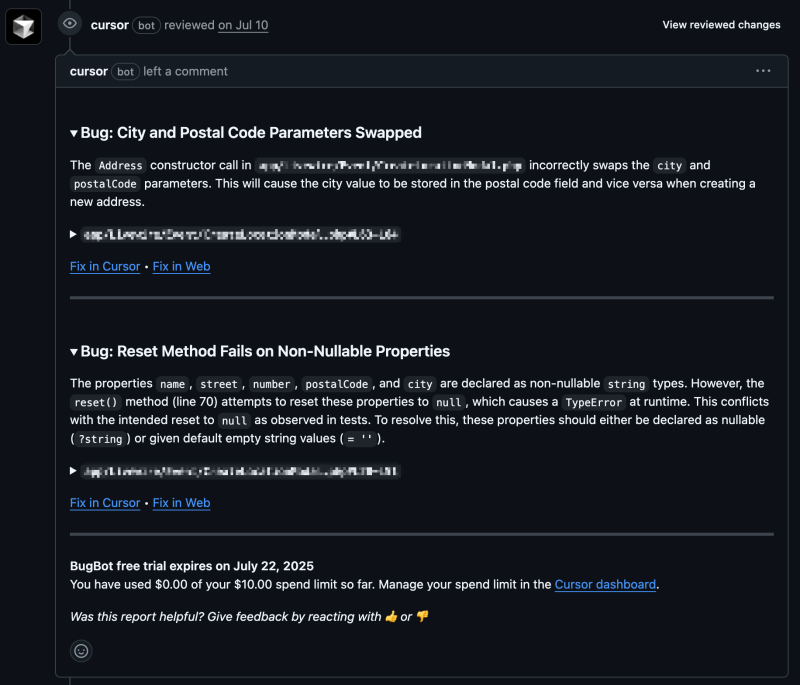Creating pull requests and having other team members review them is a great way to share knowledge in an engineering team and increase the overall quality of the changes. Two pairs of eyes see more than one, right? In small teams, reviewing pull requests can quickly become a bottleneck. Sometimes they're quickly glanced over and approved; the feature needs to get shipped after all. Creating pull requests and having your teammates review them is a powerful habit a development team can adopt. It spreads knowledge across the team and improves the overall quality of the codebase. Two pairs of eyes see more than one, after all. But in smaller teams, those extra eyes can be hard to spare. Reviews sometimes get rushed or skipped entirely because there’s a feature to ship and not enough people to take the time for feedback.
In July, Cursor released Bugbot, an AI-powered code reviewer that helps fill that gap. I’ve been using it since the beta phase, and it’s a surprisingly capable tool to add to your workflow.
Configuration
You set up Bugbot through Cursor's website by linking it to your GitHub organisation. From there, you can choose which repositories it should review and whether it should respond to manual mentions or automatically review every pull request.

Reviewing pull requests
Once configured, Bugbot just works. Triggering a review is as easy as commenting "bugbot run" on a pull request.

It then analyses the code and replies with a detailed summary of the issues it found.

How good is it, really?
Like any reviewer, human or AI, it’s not perfect. It occasionally throws false positives. For instance, in the review above, it flagged swapped parameters that weren’t actually swapped. It’s also overly cautious about nullable types, warning about missing null checks even in safe contexts. That said, these are minor annoyances rather than dealbreakers.
In our case, Bugbot ran for a month and caught around ten real bugs. One of the best examples was a subtle mix-up between two different phone number lists in the code. That’s the kind of thing a second pair of eyes can catch, especially when your team doesn’t always have time for thorough reviews.

What does it cost?
As of July 24th, Bugbot is no longer in beta and requires a subscription. At $40/month, it is on the more expensive end of the tooling spectrum, especially when compared to something like GitHub Copilot, which costs $19/month per user. You can also use your existing Claude Code subscription to review pull requests at no additional cost.
Is it worth it?
That depends. Code quality improves when more eyes are applied to it, but there’s a cost to too many false alarms. If AI reviewers are overzealous, teams will ignore them. But for small teams, where time and capacity for reviews are limited, Bugbot can offer real value. It helps break down silos and adds structure where it’s often lacking.
I’d recommend teams try out an AI code reviewer. Bugbot is a solid option, and even if your mileage may vary, the future of collaborative coding certainly includes AI help along the way.

Your product deserves grown-up leadership
We join fast-moving teams to bring calm, clarity, and technical strategy when it matters most.










Member discussion